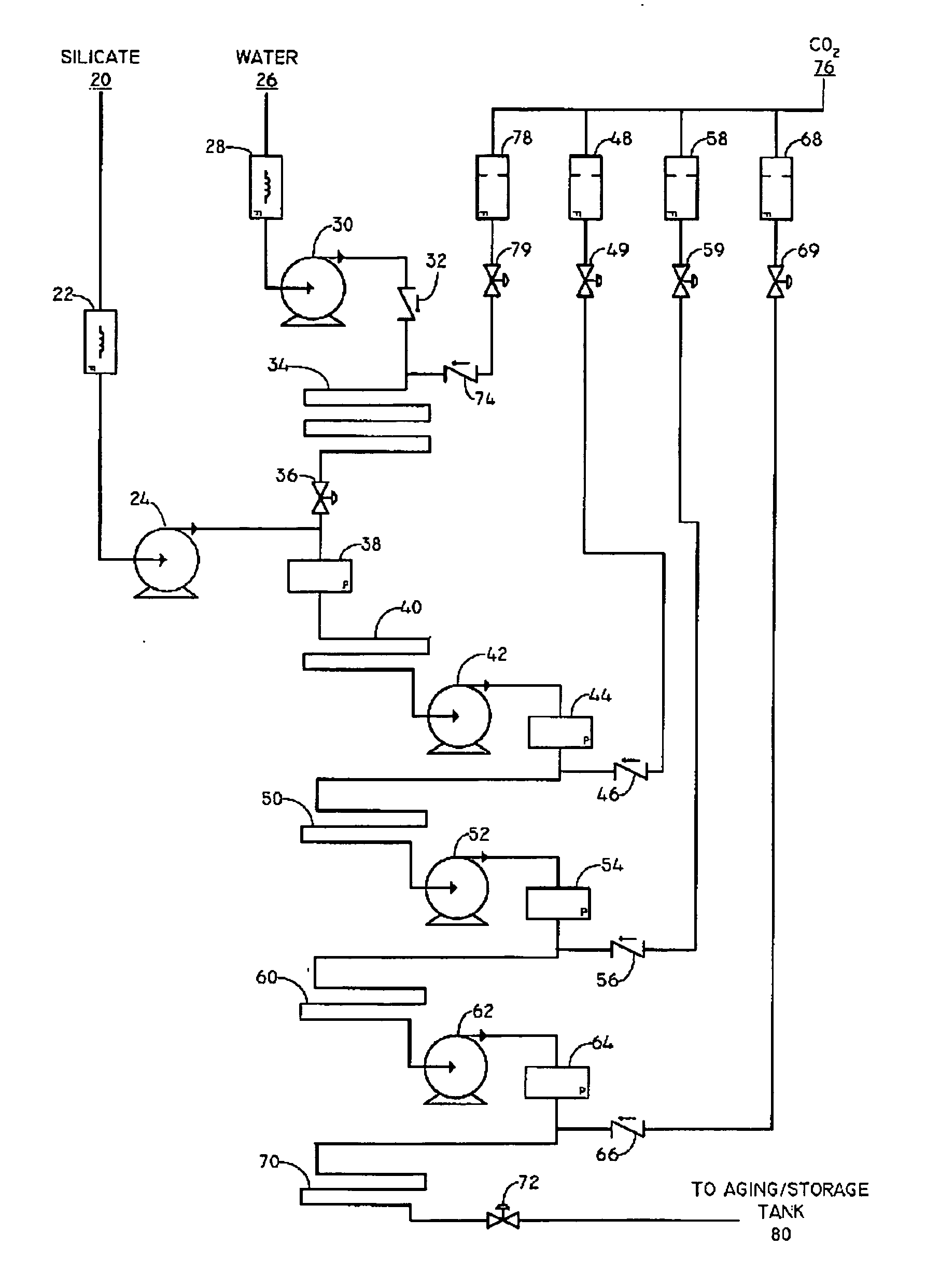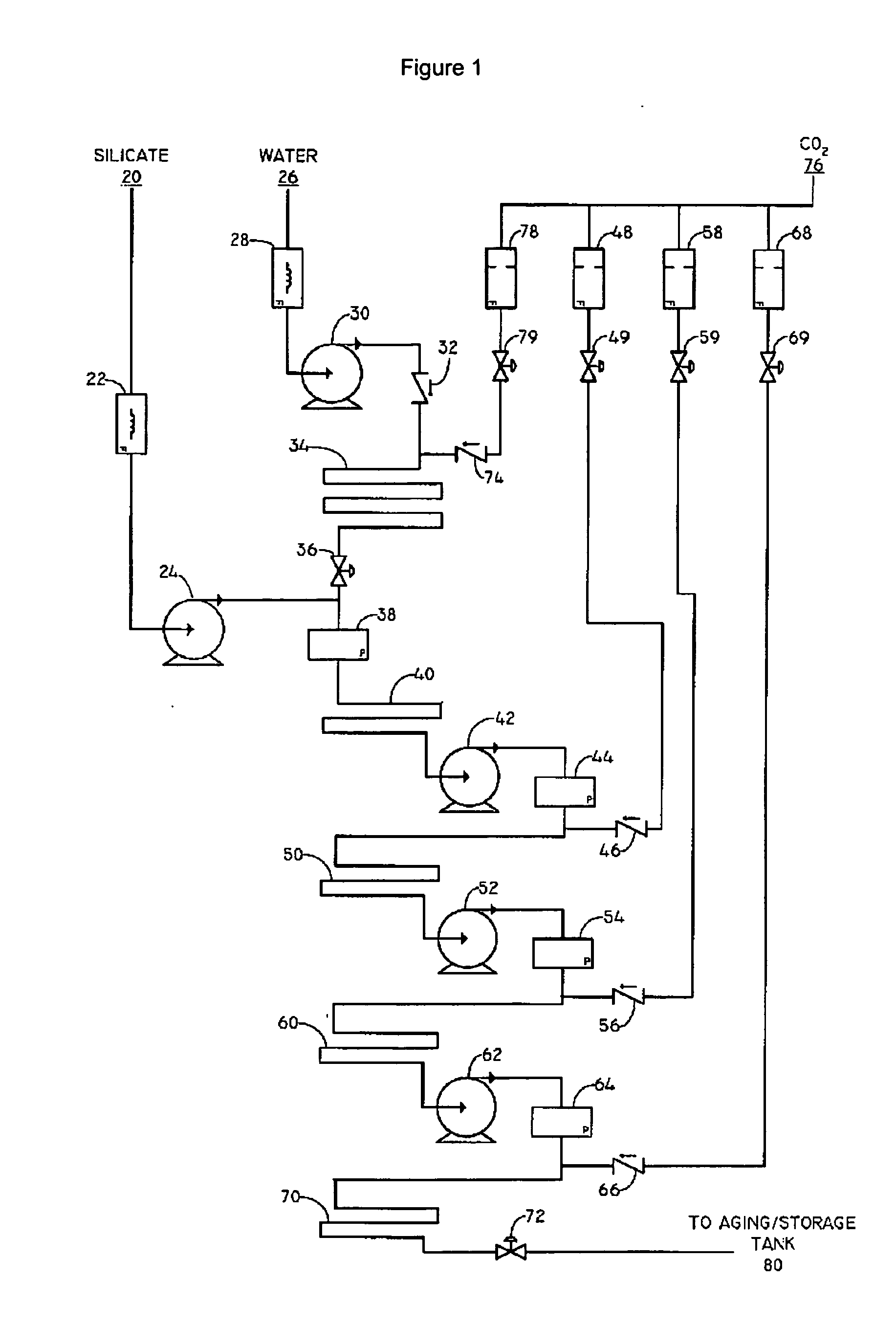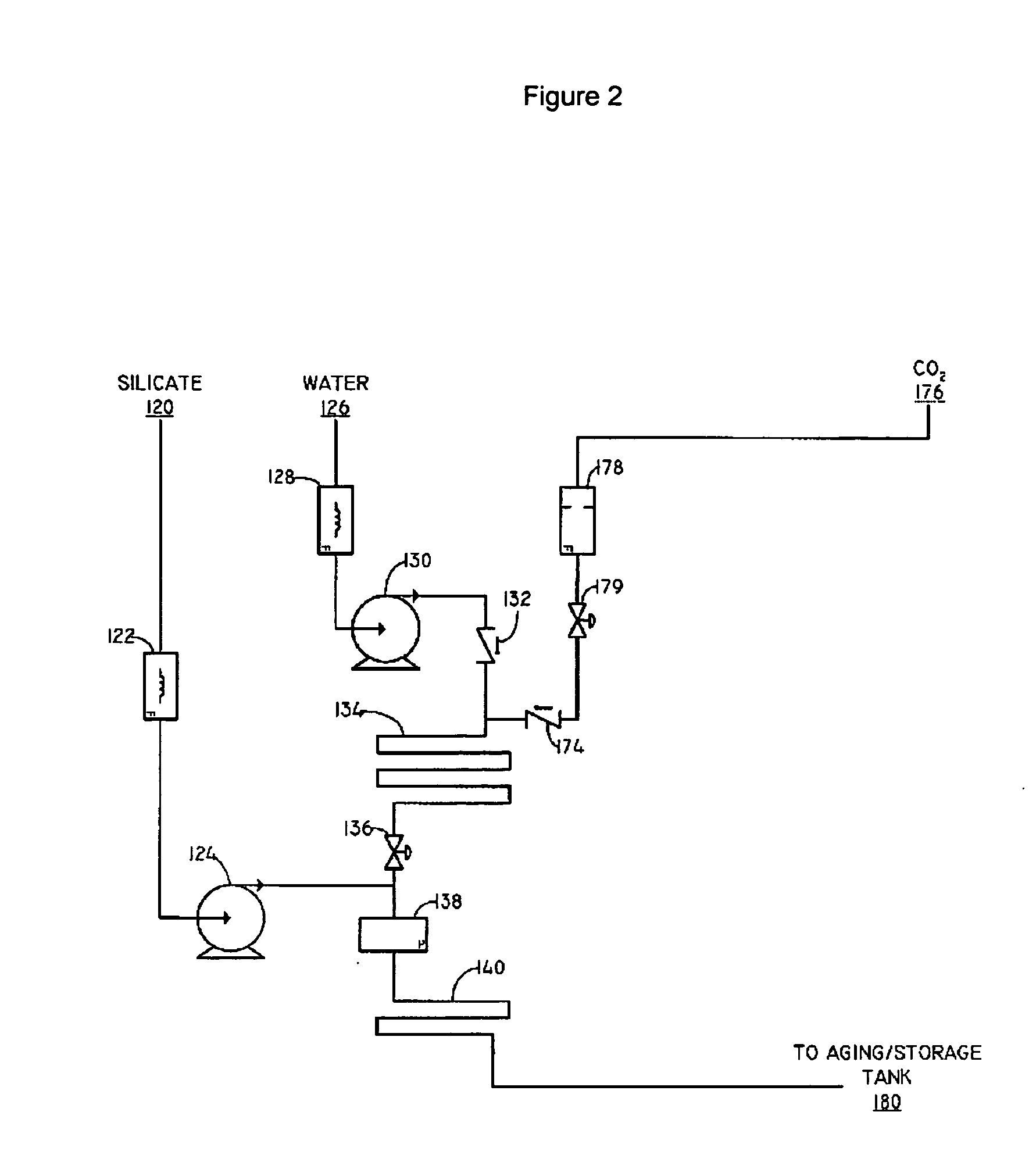High velocity, low pressure process for making silica gels and microgels
a technology of silica gel and microgel, which is applied in the field of high velocity, low pressure process for making silica gel and microgel, can solve the problems of limiting the commercial use of polysilicate gel, affecting the quality of silica gel, so as to reduce the need for more complex cleaning equipment, reduce the chance of gelled material clogging the reactor, and the reaction is faster and cleaner. the effect of more controllabl
- Summary
- Abstract
- Description
- Claims
- Application Information
AI Technical Summary
Benefits of technology
Problems solved by technology
Method used
Image
Examples
example 1
[0083] Precarbonation Conditions
[0084] A stream of CO2 at 200 SL / min is combined with a stream of water flowing at 47.3 GPM (Gallons per minute) under 100 PSIG. The combined CO2 and water travel through a pre-carbonation loop (2 in. internal diameter hose) of approximately 400 ft. The carbonated water travels at a velocity of approximately 4.8 ft / sec and takes approximately 82 seconds to complete the pre-carbonation loop. A concentration of at least 5 g / L of CO2 in the water is reached at this retention time and 100 PSIG pressure.
example 2
[0085] Silicate Reaction According to the Invention
[0086] As the pre-carbonated water exits the pre-carbonation reactor loop as in Example 1, the pressure is lowered to approximately 20 psig before merging with sodium silicate solution1 pumped at a rate of approximately 2.7 GPM. The combined streams form a reaction stream entering a first reaction loop traveling at a velocity of about 4.8 ft / sec and an output of about 50 GPM. The time for completion of the first reaction loop is about 10 seconds2. The pressure at the beginning of the first reaction loop is about 10 psig. After completing the reaction loop the pressure drops to less than 20 psig. The reaction stream enters a pump that maintains the velocity of the reaction stream at about 4.8 ft / sec and an output of about 50 GPM. Carbon dioxide is replenished into the reaction stream at the beginning of the second reaction loop at a rate of 30 SL / min. The reaction stream continues to move through a series of two more a) replenishmen...
PUM
| Property | Measurement | Unit |
|---|---|---|
| velocity | aaaaa | aaaaa |
| pressure | aaaaa | aaaaa |
| velocity | aaaaa | aaaaa |
Abstract
Description
Claims
Application Information
 Login to View More
Login to View More - R&D
- Intellectual Property
- Life Sciences
- Materials
- Tech Scout
- Unparalleled Data Quality
- Higher Quality Content
- 60% Fewer Hallucinations
Browse by: Latest US Patents, China's latest patents, Technical Efficacy Thesaurus, Application Domain, Technology Topic, Popular Technical Reports.
© 2025 PatSnap. All rights reserved.Legal|Privacy policy|Modern Slavery Act Transparency Statement|Sitemap|About US| Contact US: help@patsnap.com



